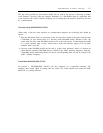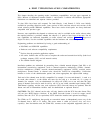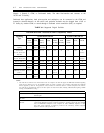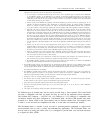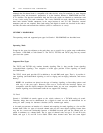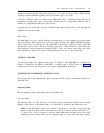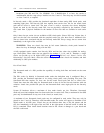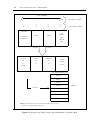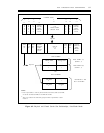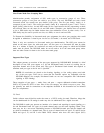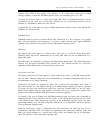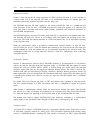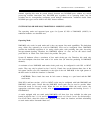
6-6
PORT TYPES/INSTALLATION COMPATIBILITIES
backplane pins 208 and 224. For J58888N1 List 2 Modification C or later, the carrier is
manufactured with the strap always installed on slots 0 and 13. The strap may be field installed
on slots 5 and 18, as required.
In line-only mode, a DS1 provides the functional equivalent of three analog OPS circuit packs, each
containing eight ports. The line-only DS1 thus requires three carrier slots: one for the actual circuit
pack and two more as virtual slots. The term virtual is used to represent slots whose backplane
signals are used by the line-only mode DS1, but not physically occupied by the interface. Virtual
slots result from a physical limitation in the number of time slots that are available in each carrier
slot .
Only 8 time slots per carrier slot are available to OPS circuit packs. Since a DS1 uses 24 time slots, it
must use the time slots associated with the occupied carrier slot, plus those from 2 additional slots.
The two virtual slots associated with the real line-only mode DS1 always occupy the two earner slots
immediately to the right of the real DS1.
WARNING: These two virtual slots must be left vacant. Otherwise, circuit packs inserted in
these slots may be damaged along with the DS1.
A fully equipped carrier contains four line-only DS1s and has four other slots available for analog-
type circuit packs. These other slots are physical slot numbers 3, 8, 16, and 21. Therefore, a single
carrier can provide up to 96 digital OPS ports. Figure 6-1, Physical and Virtual Carrier Slot
Relationships, Line-Only Mode, shows the carrier slots, physical versus virtual slot locations, and their
relationship to OPS port numbers.
Line+Trunk Mode
The line+trunk mode of a DS1 provides the capability of mixing both lines and trunks on the same
DS1 facility.
The DS1 works (by default) in line+trunk mode, unless the backplane strap is configured. Here, a
DS1 provides the functional equivalent of six analog circuit packs, each providing four ports. The
line+trunk DS1 thus requires six slots: one for the actual circuit pack and five as virtual slots.
Virtual slots mean the same thing for line+trunk mode as they do for the line-only interface with one
variation: virtual slots provide four ports for the line+trunk mode versus eight ports for the line-only
mode.
System 85 hardware allows a maximum of four trunk circuits per slot. Therefore, line+trunk
mode only uses four backplane time slots from each of the six carrier slots. Thus, a maximum of four OPS
ports may be administered for any one of the virtual (or actual) slots.
A maximum of two line+trunk circuit packs may be configured in each carrier. They may only be
placed in slots 5 and 18. Therefore, with line+trunk mode, the carrier will support a maximum of 48
digital trunks or 48 OPS ports. Virtual slots are the leftmost three slots of the left quarter and the
two slots immediately to the right of the real DS1 in the right quarter of the half carrier in which the
DS1 is contained. These virtual board locations must be left vacant or damage to a port board and
the DS1 could result.




